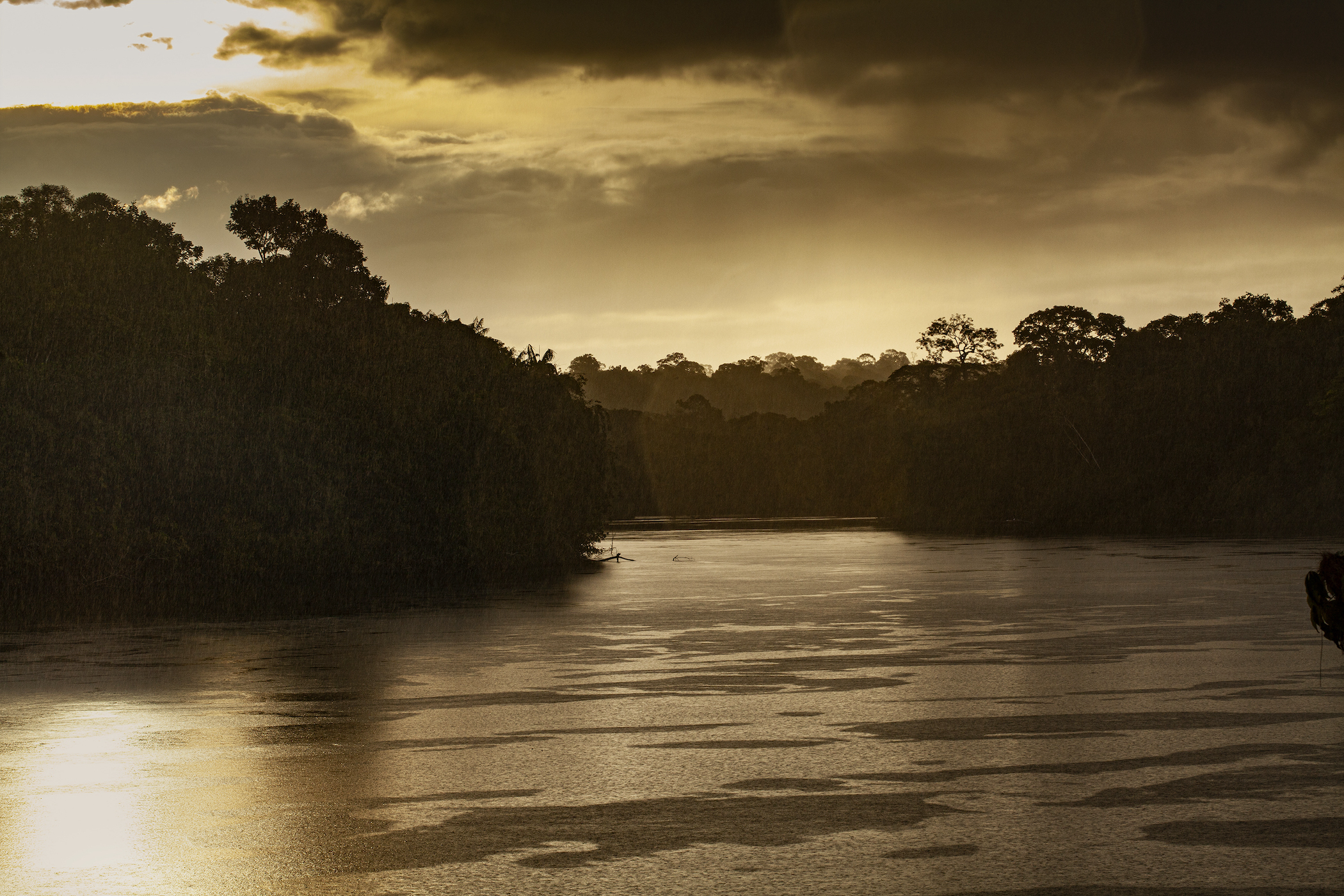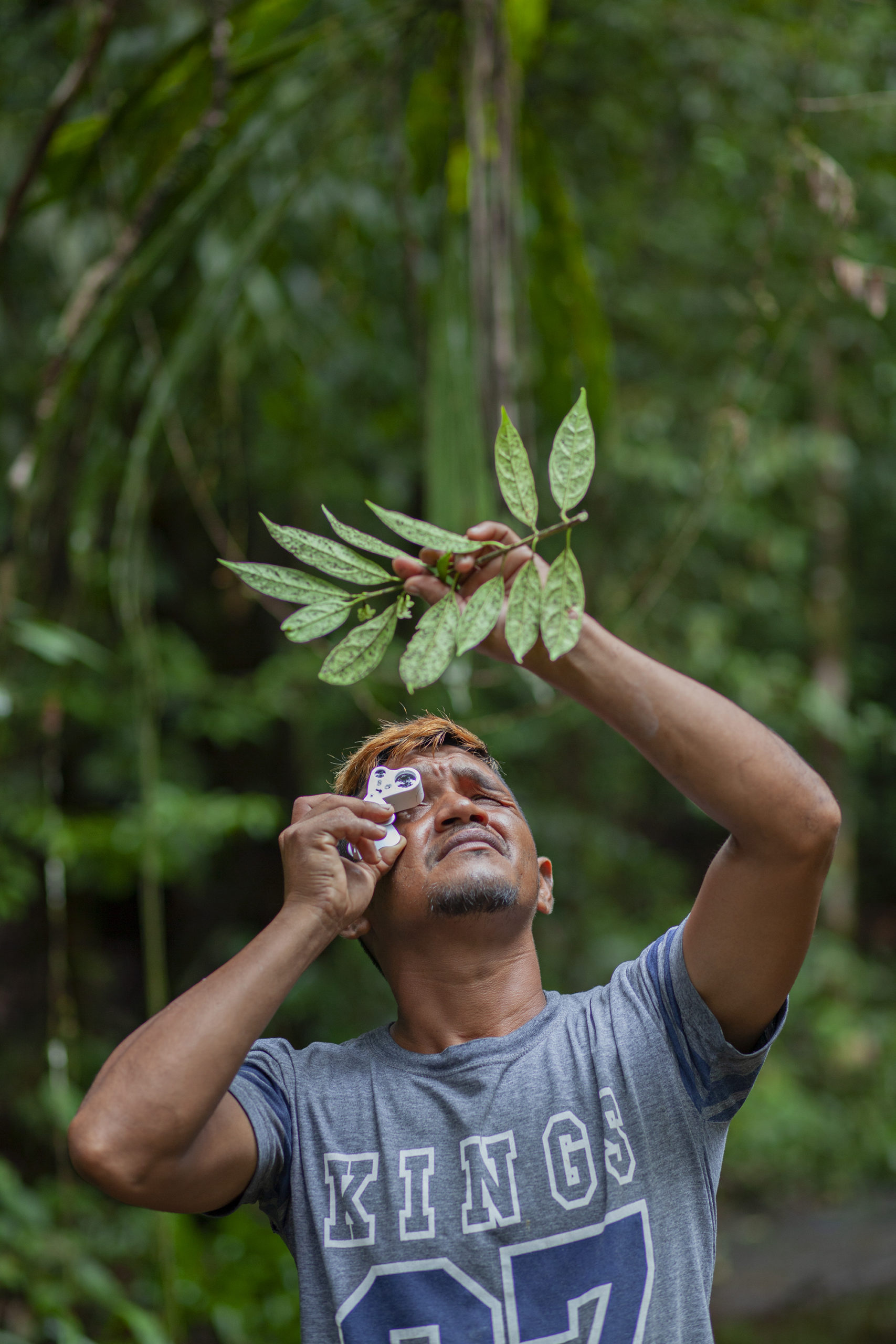- After an illegal mine in the Upper Araguari area of the northern Amazon was shut down in 2009, local riverine communities had to find a new source of income.
- Nearly 30 women from the community turned to their past traditions by collecting seeds, fruits and other plant material from the forest around them to produce soaps, ointments and fresh oils.
- The women are supplementing this traditional knowledge with Western science, tapping into a growing market for sustainably sourced Amazonian forest products such as biocosmetics.
- Proponents of the initiative say there needs to be more government support for such efforts, including funding for processing equipment and investments in education and health care for the communities.
An initiative in the northern Brazilian Amazon is helping a group of rural women reclaim their riverine culture and traditions while also empowering them economically.
The Sementes do Araguari Association, founded in 2020 in the Upper Araguari region of Amapá state, is the result of years of struggle by river-dwelling residents. For decades, the livelihoods of these caboclos, as residents here are known, were tied to a wildcat mine operating here since 1974. The closure of the mine in 2009 had an immediate and lingering socioeconomic impact on their lives.
Fernanda Brandão is an environmentalist at ICMBio, the Brazilian environment ministry’s administrative arm, which was responsible for shutting down the Capivara mine.
“Our intention as the agency responsible for ending the illegal practice was to provide other opportunities so that the community could decide, within its territory, what is valuable and what should be taken care of,” she says.

In their search for alternatives, local women — mothers, aunts and grandmothers — conceived of the idea of producing biocosmetics from raw materials obtained from the forests. Amazonian fruits and plants such as andiroba, pracaxi, breu-branco, copaíba and fava have long been used to make soaps, ointments, fresh oils and insect-repelling candles. Today, the association of nearly 30 women produces about a thousand bars of soap alone per a month.
Arlete Pantoja, a seed collector, or sementeira, and president of the association, says understanding that it’s possible to exploit natural resources without hurting the environment has changed the way residents interact with the forest.
“Achieving independence, earnings and more decent conditions was an old dream, and we realized it was possible through harmonious coexistence with nature,” she says.
These enterprising “agroextractivists” also have three sales channels in Macapá, the Amapá state capital, with another at ICMBio’s state headquarters and one in Curitiba, 2,800 kilometers (1,750 miles) south in Paraná state. They also participate in farmers’ fairs all over the country.
From collecting natural extracts to processing them, they work through the age-old cycle of rains and floods. Andiroba (Carapa guianensis), for example, is collected from the river. Currents carry the fruits that have fallen from the trees to the riverine community, where children gather them in baskets.
Each hand-woven paneiro basket can hold about 14 kilograms (31 pounds) of fruit, which in turn can yield 2 liters (about half a gallon) of oil after being put through a press. Other processing tasks that the women carry out include mixing, heating, molding and freezing, before the various goods are packaged and boxed for transport by boat.
Estefany Furtado, a tropical biodiversity scientist from the Federal University of Amapá (UNIFAP), says the caboclos have a special knowledge of the forest resources.
“I think it’s beautiful the way they know all the plants, they know where to step, which trees not to shake, which ones to touch with the terçado [machete] in order to make noise or call for help,” she says. “Their relationship with nature is based on respect, but also on necessity. They need to know everything to survive — hunting, looking for plants in the forest, producing medicines. In that territory, they are the teachers.”

Thousands of years of food wisdom
Before the women returned to their extractivist traditions, the community here subsisted off illegal mining, a predatory process introduced during the European colonization of the Americas. For those who live near the Araguari River, understanding the harmful impacts of wildcat mining and eschewing the practice for the positive impacts of extractivism has changed the community’s reality.
It’s also a shift with historical significance in this region that’s hemmed in by three protected areas: Amapá National Forest, Amapá State Forest, and Tumucumaque Mountains National Park, the biggest in Brazil.
“I think that resuming approximation and relations with extractive practices is part of a process of reclamation, after a long-term period of colonization of foods, knowledges, spaces and bodies,” says archaeobotanist Laura Furquim from the University of São Paulo. “Indigenous women say that there is a whole that includes body, territory and knowledge.”

She cites Paulo Borari, a shaman and anthropologist from the Lower Tapajós region, who speaks of a reemergence process underway in Amazonian communities, “as if people had submerged in water to go through a very difficult period, the colonial and neocolonial times — and I understand the colonial period as something that extends to the present — to finally emerge, to return to the surface.”
Historical archaeological records show that traditional agroextractivist practices, agrobiodiversity, and above all agroforestry, go back thousands of years in this part of the world, Furquim says.
“The more we know about the archaeobotanical and paleoecological remains of ancient sites, the more we see that since the beginning of human occupation of the Amazon — 12,000 years ago in some places — there has been a combined practice, a generalist diet, which pervades agroforestry practice,” she says.

Forests as repositories of knowledge
While the agroextractivist women of the Upper Araguari have generations of empirical knowledge to build on, they’re also improving their methods to build bridges with Western science.
Therezinha de Jesus Soares dos Santos, a pharmacist at the Amapá state Scientific and Technological Research Institute (IEPA), says pharmaceutical knowledge is important for riverine communities to develop techniques to handle the raw material they extract from plants. Since 2015, she has given workshops — called Farmácia da Terra, or Land Pharmacy — for the women involved in the project.
“I always stress the importance of thinking about the place in its full potential, since there are several possibilities,” she says. “To give you an idea, there are more than 100 species of copaíba in the forest, and 30% to 50% of them have therapeutic properties,” she adds, referring to a tree resin with stimulant characteristics.
However, Soares says that while the will to learn is there, material support for the initiative is lacking.
“They need equipment, space for processing materials, machinery, labels and packaging. We don’t have any governance concerned with serving the population. So it takes twice as much work and the struggle is permanent,” she says.

An economic model that leaves the forest standing
Any achievements the sementairas make are gradual in a country whose government has bucked the global sense of urgency about climate change. With the Amazon on the tipping point of an irreversible decline from rainforest to savanna, “science, technology and stronger traditional populations are the decisive path for the emergence of economic activities capable of keeping the forest standing and avoiding destruction of the ecosystem services on which we all depend — starting with the climate system,” sociologist Ricardo Abramovay said in a 2019 study.
Furtado from Unifap says obstacles such as lack of specialized advice and investment in public policies hold up the economic viability of traditional communities. “Assistance, education and health care are scarce in these communities, which compromises the ways of life of those populations, who are often forced to move from rural to urban areas,” she says.
Today, the sementeiras of the Araguari River are drawing attention from a new market. The bioeconomy and agroecology are at the center of a growing debate on safeguarding the culture and valuing the sociobiodiversity of the Amazon.
A 2020 report on the state of the world’s forests by the U.N.’s Food and Agriculture Organization (FAO) shows that stopping deforestation and forest degradation requires a sea change in the way in which food is produced and consumed. That change, it says, must guarantee land security and respect for the rights and knowledge of local communities and Indigenous peoples — a group that has proved more capable than any other of serving as environmental stewards.
In the second half of 2021, the Sementes do Araguari Association, in partnership with the nonprofit Institute for Indigenous Research and Training (Iepé), received funding through 2025 that will allow them to build a small processing plant and buy machinery. They’ve already chosen a plot for the new plant, in the sustainable use area of Amapá State Forest.
Banner image of Gloriaci Pantoja, widely considered the matriarch of the seed collectors from the Araguari River. Image by Maurício de Paiva.
This story was reported by Mongabay’s Brazil team and first published here on our Brazil site on Nov. 30, 2021.
